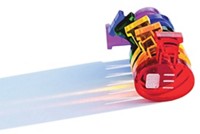Advertisement
Grab your lab coat. Let's get started
Welcome!
Welcome!
Create an account below to get 6 C&EN articles per month, receive newsletters and more - all free.
It seems this is your first time logging in online. Please enter the following information to continue.
As an ACS member you automatically get access to this site. All we need is few more details to create your reading experience.
Not you? Sign in with a different account.
Not you? Sign in with a different account.
ERROR 1
ERROR 1
ERROR 2
ERROR 2
ERROR 2
ERROR 2
ERROR 2
Password and Confirm password must match.
If you have an ACS member number, please enter it here so we can link this account to your membership. (optional)
ERROR 2
ACS values your privacy. By submitting your information, you are gaining access to C&EN and subscribing to our weekly newsletter. We use the information you provide to make your reading experience better, and we will never sell your data to third party members.
Periodic Table
Newscripts
Constructing the periodic table from thread and yarn
by Jyllian Kemsley
March 18, 2019
| A version of this story appeared in
Volume 97, Issue 11

Not your 1970s plant hanger
Does your love of the periodic table extend to tying 200,000 tiny knots?
That was the project that Jane Stewart of Surrey, England, undertook last summer. To honor the International Year of the Periodic Table of Chemical Elements, Stewart combined metallic embroidery thread and significant persistence to create a periodic table out of macramé.
Macramé essentially involves making a fabric by knotting thread or cord. Some readers may recall its use in plant hangers and tapestries in the 1970s, but the technique dates back centuries as a way to finish the edges of hand-woven textiles.
Stewart, who has a bachelor’s degree in biochemistry, spent 350 hours over six months constructing her periodic table. The tiles measure about 5 cm long on each side, and the full table is about 1 m wide. “During the transition metals, I was getting bored silly of black and gold,” she says. “There are 38 of them, and they took over a month to finish.”
She also had to backtrack a bit when she learned that elements 113, 115, 117, and 118 had been named. “I was quite grumpy that weekend,” she says.
A lifelong crafter and the child of two PhD chemists, Stewart began experimenting with macramé when her aunt gave her a kit. She’s taken the craft to three dimensions for other projects, including a set of alphabet cubes incorporating Greek letters.
If you’d like to see the table in person, it has embarked on a celebrity tour of the UK with the support of the Royal Society of Chemistry. It appears at St. Catharine’s College this month, followed by the York Festival of Ideas and a Royal Society of Chemistry family day in the summer, then the Universities of Edinburgh and Warwick in September.

Sock it to me
Stewart isn’t the only person celebrating the periodic table in handicrafts. A group known as UK Sock Knitters has organized a “knit-a-long” in which participants knit socks inspired by one of the periodic table groups. For example, the yarn a knitter chooses might relate to an element’s color. Each month also has a featured element. January was group 1 and hydrogen, February was group 17 and iodine or chlorine, March is group 10 and platinum, and April is group 8 and iron. Knitters can post their finished socks—and win prizes—in the UK Sock Knitters group on Ravelry, an online knit and crochet community site.
This Newscripts author first learned to knit as a child and recently finished her first pair of socks. They weren’t inspired by the periodic table, but yes, dear reader, there is a science connection. The yarn, called Crazy Chemist, was a prize from Mad Scientist Yarns, run by scientist duo Michelle and Scott Idiens.
Advertisement
Trained as a pharmaceutical chemist and an environmental chemist, respectively, Michelle and Scott now work in laboratory information management systems. Dyeing yarn gives them the “good parts” of laboratory science—creativity and experimentation—“without all the politics,” Michelle says.
Their signature Mad Scientist yarn has a hidden power: it’s dyed with ultraviolet-reactive dyes. They then over-dye it with a visible color for their Mad Scientist series—gray for Crazy Chemist, blue for Bonkers Biologist, red for Erratic Engineer, purple for Phunky Physicist, and cyan for Apoplectic Astonomer. So my new socks don’t just keep my feet warm; in the right light, the handcrafted hosiery makes my toes glow.
Jyllian Kemsley wrote this week’s column. Please send comments and suggestions to newscripts@acs.org.






Join the conversation
Contact the reporter
Submit a Letter to the Editor for publication
Engage with us on Twitter